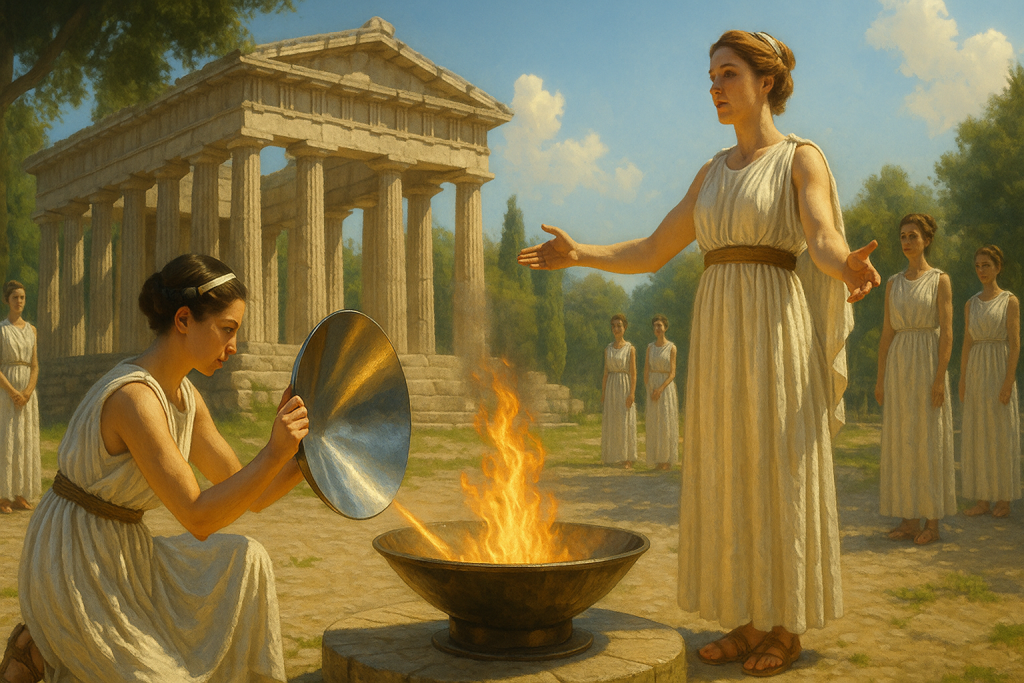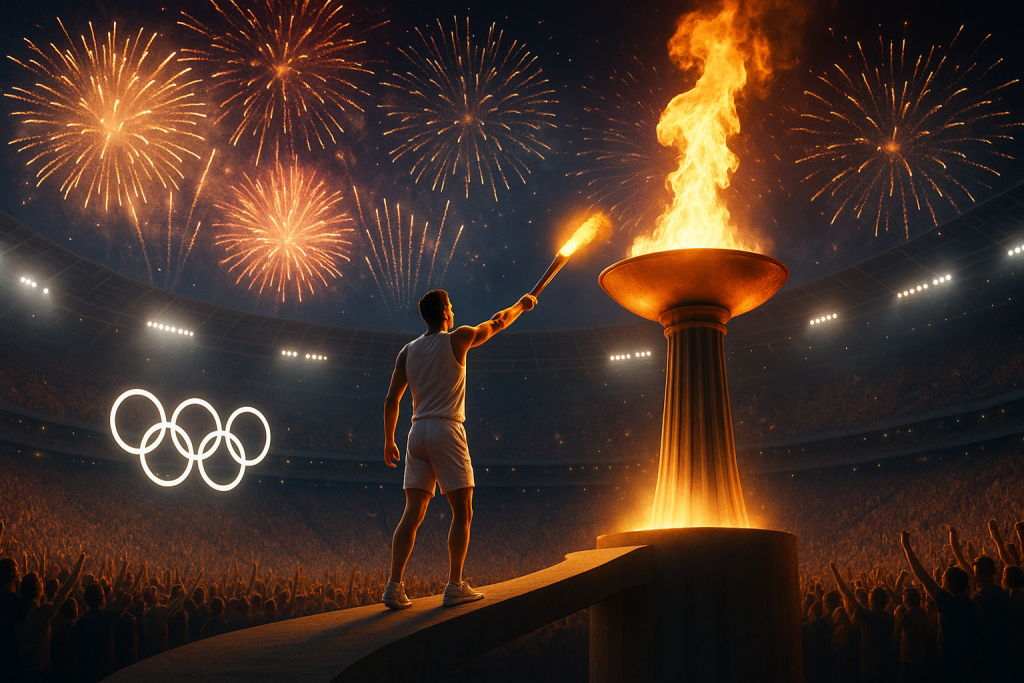The Origins and Meaning of the Olympic Flame
The Olympic flame is one of the most powerful and enduring symbols of the Olympic Games, representing purity, the quest for perfection, and the continuity between ancient and modern Olympics. Its roots trace back to the ancient Greek Olympics, where a sacred fire burned continuously throughout the Games to honor the goddess Hestia. The modern tradition, revived in 1928 for the Amsterdam Games, symbolizes the enduring spirit of competition and unity among nations.
Since its revival, the Olympic flame has become much more than a ceremonial fire. Its journey from Greece to the host city is a meticulously orchestrated event, bringing together people from all walks of life. The relay embodies the ideals of peace, friendship, and international cooperation, making it a unique aspect of the world’s largest sporting event.
Understanding the intricate details of how the Olympic flame travels reveals the deep respect for tradition and the innovation that ensures its safe arrival at every opening ceremony.

How Is the Olympic Flame Lit?
The Ancient Ceremony in Olympia
The journey of the Olympic flame begins in a highly symbolic ceremony at the Temple of Hera in Olympia, Greece. Priestesses clad in ancient Greek attire use a parabolic mirror to ignite the flame from the sun’s rays, ensuring the fire is pure and untouched by human hands. This ritual connects the modern Games to their ancient origins and signifies the start of the torch relay.
Symbolic Significance
The use of the sun’s rays to light the flame is rich in symbolism. It represents clarity, purity, and the enduring energy of the sun, carrying these qualities throughout the torch relay. The flame is kept burning in a special cauldron until it begins its global journey, ensuring its continuity and authenticity.

The Olympic Torch Relay: A Marvel of Planning and Participation
The Torch Relay Route
Once lit, the Olympic flame embarks on an epic relay that spans countries and continents, ultimately arriving at the host city. The torch relay is carefully planned months in advance, with a route that often includes historic landmarks, city centers, and scenic landscapes. Each relay is designed to showcase the culture and heritage of both Greece and the host nation.
The relay can cover thousands of kilometers and involve hundreds or even thousands of torchbearers. For example, the 2008 Beijing Games featured a relay of over 137,000 km, crossing five continents and more than 20 countries. The 2012 London Olympics torch relay included over 8,000 carriers for a 70-day journey across the UK.
Selection of Torchbearers
One of the most inspiring aspects of the Olympic torch relay is the selection of torchbearers. These individuals are often chosen for their personal achievements, community contributions, or as representatives of diverse backgrounds and ages. The chance to carry the Olympic torch stands as a lifetime honor, symbolizing hope, perseverance, and the Olympic spirit. Torchbearers typically carry the flame for a short distance before passing it on, forming a chain of unity that spans the entire route.

Innovative Ways the Olympic Flame Travels the World
Traditional and Unconventional Transportation Methods
While most of the flame’s journey is covered on foot, the Olympic flame has traveled by an incredible variety of methods to reach remote or symbolic destinations. Some of the most notable modes of transportation include:
- Airplanes: The flame is placed in special safety lanterns for air travel, ensuring it remains lit during long flights between countries.
- Boats and Ships: To cross seas, the flame has traveled on historic ships, ferries, and even Viking longboats for symbolic relays.
- Trains: In large countries, the torch relay often includes stretches by train, such as the iconic trip on Russia’s Trans-Siberian Railway in 2014.
- Bicycles, Motorcycles, and Cars: Urban and rural stretches are often covered by a variety of vehicles, depending on terrain and conditions.
- Camels, Horses, and Dog Sleds: For particularly unique landscapes, the flame has been carried on camelback in desert regions and by dog sled in arctic zones.
Historic Firsts and Unusual Journeys
Throughout history, the Olympic flame has achieved some remarkable travel feats:
- In 1976, it crossed the Atlantic Ocean in a signal form, transmitted via satellite and then used to re-light the torch with a laser beam.
- The 2000 Sydney Olympics saw the flame travel underwater along the Great Barrier Reef, carried by a diver with a specially designed torch.
- The Sochi 2014 Games sent the flame into space aboard a Soyuz spacecraft, making it the first Olympic flame to leave Earth’s atmosphere.
These creative relays capture global attention and highlight the lengths organizers go to preserve the flame’s continuity and symbolism.

Ensuring the Flame Never Goes Out: Backup Systems and Safety Protocols
Design of the Olympic Torch
The Olympic torch is engineered to withstand a wide range of environmental conditions, from rain and wind to snow and extreme temperatures. Modern torches use fuel sources such as liquefied petroleum gas or a combination of propane and butane, ensuring a steady, visible flame throughout the journey.
Backup Flames and Safety Lanterns
A critical aspect of the relay is ensuring the flame never goes out. Organizers carry several backup flames, each kindled from the original source in Olympia, in specially designed safety lanterns. If the main torch is extinguished, it can be re-lit instantly without breaking the symbolic chain. These lanterns are also used during air and sea travel or in hazardous weather conditions.
Stringent safety protocols guide every stage of the relay. Torchbearers receive training, and support teams follow each segment to address emergencies or technical problems, safeguarding the flame’s continuity and symbolism.
The Arrival: Lighting the Olympic Cauldron
The Opening Ceremony’s Pinnacle
The journey of the Olympic flame culminates at the opening ceremony of the Games, where the final torchbearer lights the Olympic cauldron. This dramatic moment, often kept secret until the last second, signifies the official start of the Games and ignites excitement worldwide. Notable figures, from legendary athletes to everyday heroes, have had the honor of lighting the cauldron, making it a defining moment in Olympic history.
Global Impact and Inspiration
The lighting of the cauldron is broadcast to millions of viewers, inspiring hope, unity, and the belief in human achievement. The flame remains burning throughout the Games, only to be extinguished at the closing ceremony, marking the end of another chapter in Olympic tradition.
Fascinating Facts About the Olympic Flame’s Journey
- The longest relay: The 2008 Beijing torch relay covered over 137,000 km.
- Most torchbearers: Over 15,000 people carried the flame for the Athens 2004 Games.
- Unusual settings: The flame has crossed deserts, mountains, underwater reefs, and even outer space.
- Symbol of peace: During times of crisis, the relay has included messages of hope and global solidarity.
These facts underscore the complexity and global reach of the Olympic flame’s journey, making it a truly unique event in the world of sports.
Conclusion: The Enduring Legacy of the Olympic Flame
The Olympic flame serves as a powerful reminder of the Games’ mission to unite people across borders through sport, tradition, and shared values. Its journey from ancient Olympia to the host city encapsulates innovation, careful planning, and the indomitable human spirit. For athletes, torchbearers, and viewers alike, the flame is more than just a symbol—it is a beacon of hope, inspiring generations to come.
Whether you witness the relay in person or follow it online, understanding how the Olympic flame travels adds a new dimension to the Olympic experience. It’s not just a journey—it’s a celebration of humanity’s finest ideals.


